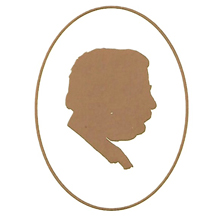Biographical Note

G. K. Chesterton (1874-1936)
Born: May 29, 1874, (Campden Hill, Kensington, London, England)
Died: June 14, 1936, (Beaconsfield, Buckinghamshire, England) – aged 62
Buried: Roman Catholic Cemetery, Beaconsfield, Buckinghamshire, England
Spouse: Frances Blogg (m. 1901)
Occupation: Journalist, novelist, essayist, poet
Education: St. Paul’s School, London
Slade School of Art, London
University College, London
G. K. Chesterton was the towering figure of Christian apologetics in the first half of the twentieth century. Playwright, poet, novelist, journalist, editor, theologian and philosopher, his literary range was both wide and astonishingly deep. From 1911 until his death in 1936, he and his brother edited The Eye-Witness, The New Witness, and G. K.’s Weekly. In addition, he wrote prolifically for the Daily News, the Daily Herald, and the Illustrated London News—a body of journalism only now being collected and made available to a later generation. His fiction included the much-loved Father Brown stories and novels of dazzling allegorical intelligence—Orthodoxy and The Man Who Was Thursday (1908), The Napoleon of Notting Hill (1904), The Ball and the Cross (1910), The Flying Inn (1914). These alone are enough to justify Chesterton’s reputation as a writer of powerful, even mystical, imagination.
Chesterton converted to Roman Catholicism in 1922. Even before his conversion, his writing was marked by a deep sympathy for the Church and an understanding of her teaching. Orthodoxy, publish in 1908, is at once a history of Chesterton’s own mind and a brilliant defence of Christian philosophy. The Everlasting Man (1925) represents Chesterton’s mature understanding of Christian history; an attempt, as his biographer Maisie Ward puts it, “to get outside Christianity and see for the first time its uniqueness among the religions of the world.” Saint Francis of Assisi (1923), one of the highest expressions of Chesterton’s mysticism, is a beautiful account of the Christian Church’s most beloved saint. His Saint Thomas of Aquinas (1933) is regarded by many, including Étienne Gilson, as the greatest single work on the Christian Church’s greatest philosopher.
Chesterton suffered serious illness in the autumn of 1914 from which he never fully recovered. After years of failing health, he did on June 14, 1936, on the Sunday within the Octave of Corpus Christi. Recorded on his headstone are the words of his favorite hymn, Saint Thomas Aquinas’s hymn to the Blessed Sacrament.
Major Works
Ward, M. (ed.), The Napoleon of Notting Hill
- (1903), Robert Browning
- (1904), The Napoleon of Notting Hill
- (1905), Heretics
- (1906), Charles Dickens: A Critical Study
- (1908a), The Man Who Was Thursday
- (1908b), Orthodoxy
- (1911a), The Innocence of Father Brown
- (1911b), The Ballad of the White Horse
- (1912), Manalive
- (1916), The Crimes of England
- Father Brown (short stories) (detective fiction)
- (1920), The New Jerusalem
- (1922), The Man Who Knew Too Much
- (1922), Eugenics and Other Evils
- (1923), Saint Francis of Assisi
- (1925), The Everlasting Man
- (1925), William Cobbett
- (1933), Saint Thomas Aquinas
- (1935), The Well and the Shallows
- (1936), The Autobiography
- (1950), The Common Man
Short Stories
- "The Trees of Pride", 1922
- "The Crime of the Communist", Collier's Weekly, July 1934
- "The Three Horsemen", Collier's Weekly, April 1935
- "The Ring of the Lovers", Collier's Weekly, April 1935
- "A Tall Story", Collier's Weekly, April 1935
- "The Angry Street – A Bad Dream", Famous Fantastic Mysteries, February 1947.
Plays
- Magic, 1913.
